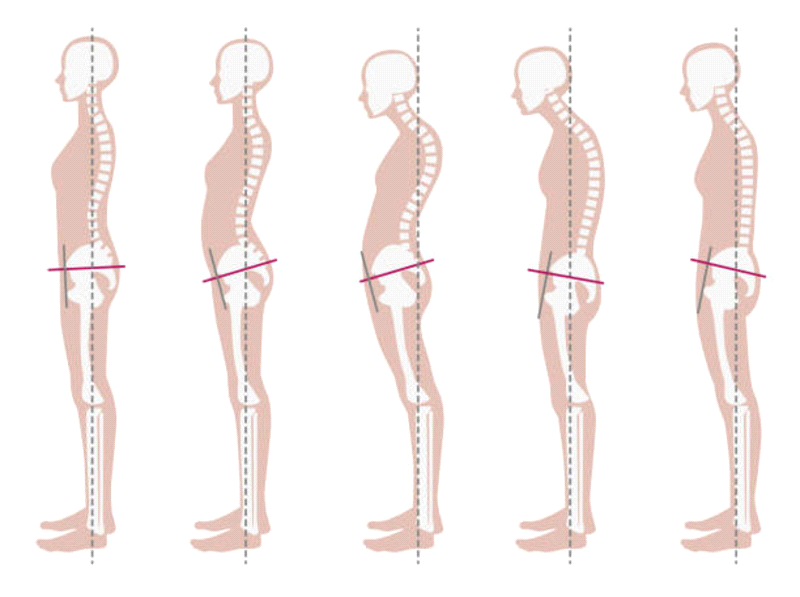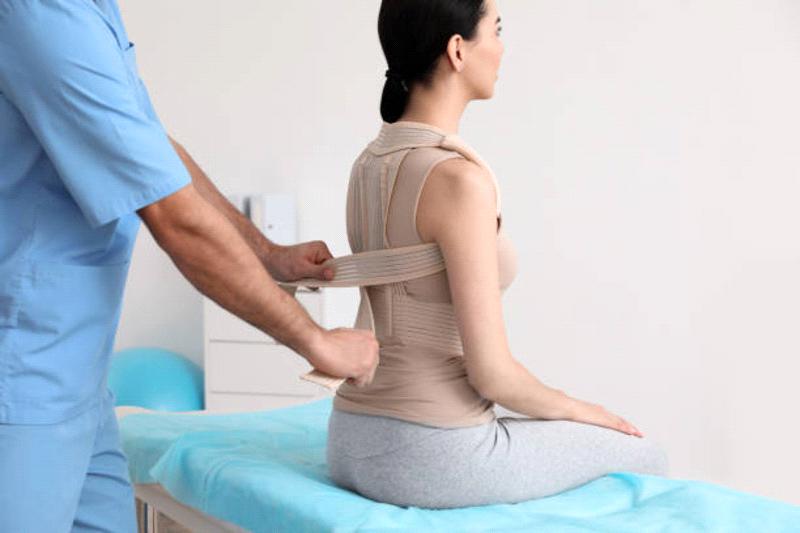Understanding Kyphosis: An Insight into This Common Spinal Disorder
Jan 21, 2024 By Madison Evans
Kyphosis is a condition that affects the curvature of the spine, causing it to curve excessively in the upper back. It can have various causes and can occur at any age. In this blog post, we will explore the different types of kyphosis, its causes and risk factors, symptoms and diagnosis, treatment options and prevention methods, as well as provide insights on living with kyphosis.
Types of Kyphosis

Postural Kyphosis
Postural kyphosis is the most common type and can develop as a result of poor posture. It often occurs during adolescence and is commonly seen in teenagers who slouch or carry heavy backpacks for prolonged periods.
Scheuermann's Kyphosis
Scheuermann's kyphosis is characterized by wedging of the vertebrae in the upper back. It typically develops during adolescence and can cause the spine to appear rounded or hunched forward.
Congenital Kyphosis
Congenital kyphosis is present at birth and is caused by abnormal development of the spine. It can be associated with other spinal abnormalities or birth defects.
Nutritional Kyphosis
Nutritional kyphosis can occur due to nutritional deficiencies, particularly in vitamins and minerals essential for bone health, such as vitamin D and calcium.
Age-related Kyphosis
Age-related kyphosis, also known as "dowager's hump," is more commonly seen in older adults. It is often caused by osteoporosis, a condition that weakens the bones and increases the risk of fractures.
Risk Factors
Poor posture, especially during adolescence when the spine is still developing, is a significant risk factor for developing kyphosis. Other risk factors include;
- Spinal Abnormalities.
- Scoliosis
- Disc Degeneration.
- Osteoporosis or Marfan syndrome.
- Genetics can also play a role in the development of kyphosis.
Symptoms of Kyphosis
- Back Pain and Stiffness: This is often the first noticeable symptom. The pain may be persistent or may worsen with activity or prolonged periods of standing or sitting.
- Fatigue: Many people with kyphosis experience fatigue, especially in the back and leg muscles, due to the constant effort to maintain posture.
- A Noticeable Hump or Curve in the Upper Back: The severity of the curve can vary from person to person, and in severe cases, it may be quite pronounced and visible.
- Tight hamstrings: The hamstrings (the muscles in the back of the thighs) often become tight in individuals with kyphosis.
- Difficulty Breathing: In severe cases, the curvature of the spine can impact the lungs and cause breathing difficulties.
- Reduced appetite and digestive issues: If the kyphosis is severe, it can cause pressure on the abdomen leading to reduced appetite and digestive problems.
- Reduced mobility and flexibility: Over time, kyphosis can lead to a decreased range of motion in the spine, making it difficult to perform certain movements and activities.
- Psychological impact: The physical changes and chronic pain associated with kyphosis can also lead to psychological symptoms such as low self-esteem and depression.
How Can We Diagnose Kyphosis?
Diagnosing kyphosis typically begins with a thorough physical examination, during which a healthcare professional will observe the spine's curvature and alignment while the individual is standing, sitting, and bending. A series of tests, including neurological examinations to assess reflexes and muscle strength, can also be carried out to identify any associated neurological symptoms.
- For a definitive diagnosis, imaging studies such as X-rays, computed tomography (CT) scans, and magnetic resonance imaging (MRI) scans may be recommended.
- In some cases, a bone density test may also be performed to determine if osteoporosis is contributing to Kyphosis.
- A thorough medical history review and discussion of symptoms can help identify any potential underlying conditions or risk factors.
Treatment Options
The treatment for kyphosis depends on the severity of the condition and the underlying cause.
- Physical Therapy: In mild cases, conservative approaches such as physical therapy, exercises to strengthen the back muscles, and practicing good posture may be recommended.
- Bracing or Orthotics: For more severe cases, bracing or orthotics may be used to help correct the curvature and prevent further progression.
- Surgery: In some instances, surgery may be necessary to realign the spine and stabilize the affected area.
- Surgical Intervention: For severe kyphosis, surgery may be recommended. Procedures can include spinal fusion, laminectomy, or a kyphoplasty. The chosen procedure will depend on the cause, location, and severity of the curve.
Prevention Methods

- Maintain Good Posture: Consistently practicing good posture can help prevent kyphosis. This includes keeping the head straight and not tilting it forward, keeping the shoulders back, and avoiding slouching while sitting or standing.
- Regular Exercise: Regular physical activity, especially exercises that strengthen the core and improve flexibility, can help maintain healthy spinal alignment and reduce the risk of developing kyphosis. Yoga and pilates are particularly beneficial.
- Healthy Diet: A diet rich in calcium and vitamin D is essential for bone health. Consuming adequate amounts of these nutrients can help prevent conditions like osteoporosis, which can lead to kyphosis.
- Regular Check-ups: Regular physical examinations can help detect kyphosis early. Early detection and treatment can prevent the condition from worsening.
- Ergonomic Practices: Use ergonomic furniture that supports the natural curve of the spine. If you work at a desk, make sure your workstation is set up correctly, with the computer screen at eye level.
Living with Kyphosis
Living with kyphosis can present challenges, both physically and emotionally. However, there are coping strategies and support available to help individuals manage the condition. Physical therapy exercises, Pain management techniques, and assistive devices like ergonomic chairs or pillows can provide relief and improve daily functioning.
It is essential for individuals with kyphosis to seek support from healthcare professionals, support groups, or online communities where they can connect with others who understand their experiences and provide valuable insights.
Conclusion:
Kyphosis is a condition that can affect individuals of all ages. Understanding the different types, causes, and treatment options is crucial in managing the condition effectively. By promoting awareness and seeking professional help, individuals with kyphosis can live fulfilling lives and maintain optimal spinal health.
-
 Jul 31, 2024
Jul 31, 2024Top Tea Tree Toners for Acne-Free Skin
Find the best tea tree toners to quickly eliminate acne and achieve clear skin.
-
 Nov 08, 2023
Nov 08, 2023A Comprehensive Guide to Tumors: Definition, Types, and Treatment
Explore the world of tumors in this comprehensive guide. Learn about their types, causes, early signs, diagnosis, treatment options and prevention strategies.
-
 Jul 26, 2024
Jul 26, 2024Air Drying vs Blow Drying: What’s Best for Your Hair
The pros and cons of air-drying vs blow drying your hair and find out which method is better for maintaining healthy, beautiful locks
-
 Nov 08, 2023
Nov 08, 2023Discover the relationship between baby powder and cancer, and Johnson and Johnson baby powder lawsuit.
Baby Powder's Possible Connection to Cancer Risk
